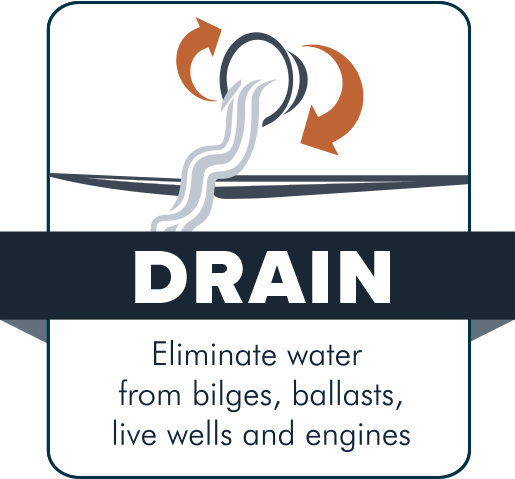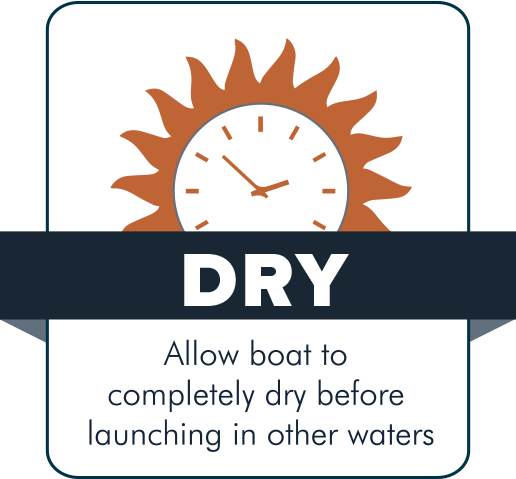Because it can take several years to determine if quagga or zebra mussels have invaded a waterbody, you can never be certain if it is affected or not. That’s why all boaters in Utah are required to know how to prevent the spread of aquatic invasive species like quagga mussels.
Before you launch
- Complete the annual DWR mussel-aware boater education course.
- Print out your proof of course completion to keep in your launch vehicle, or download it to your DWR Hunting and Fishing app.
After boating
Complete the self-certification process after exiting any waterbody:
- Clean: All plants, fish, mussels and mud from the vessel (discard unused bait in the trash).
- Drain: All water from your equipment.
- Dry: Recommended for all watercraft and required for boats exiting a mussel-infested waterbody (if they are not having a professional decontamination performed)
- Spring: 18 days (March, April and May)
- Summer: 7 days (June, July and August)
- Fall: 18 days (September, October and November)
- Winter: 30 days (December, January and February)
- You can also freeze your properly winterized equipment for 72 consecutive hours (three days)
Stop at all operating AIS inspection stations which may include: when entering launch areas, when leaving a body of water, or when passing a highway checkpoint or Port of Entry.
- Be prepared to show proof of completion of the annual mussel-aware boater education course (a print copy or downloaded to your DWR Hunting and Fishing app).
- Even if you’ve previously stopped at an AIS check station, you must stop at any others you may encounter while in transit.
- If a check station is closed, you are not required to stop.



You should routinely self-decontaminate after every boating excursion out of precaution, even if you were not in a known quagga-infested water.
See the live AIS inspection statistics dashboard to learn more about AIS-prevention measures in Utah.